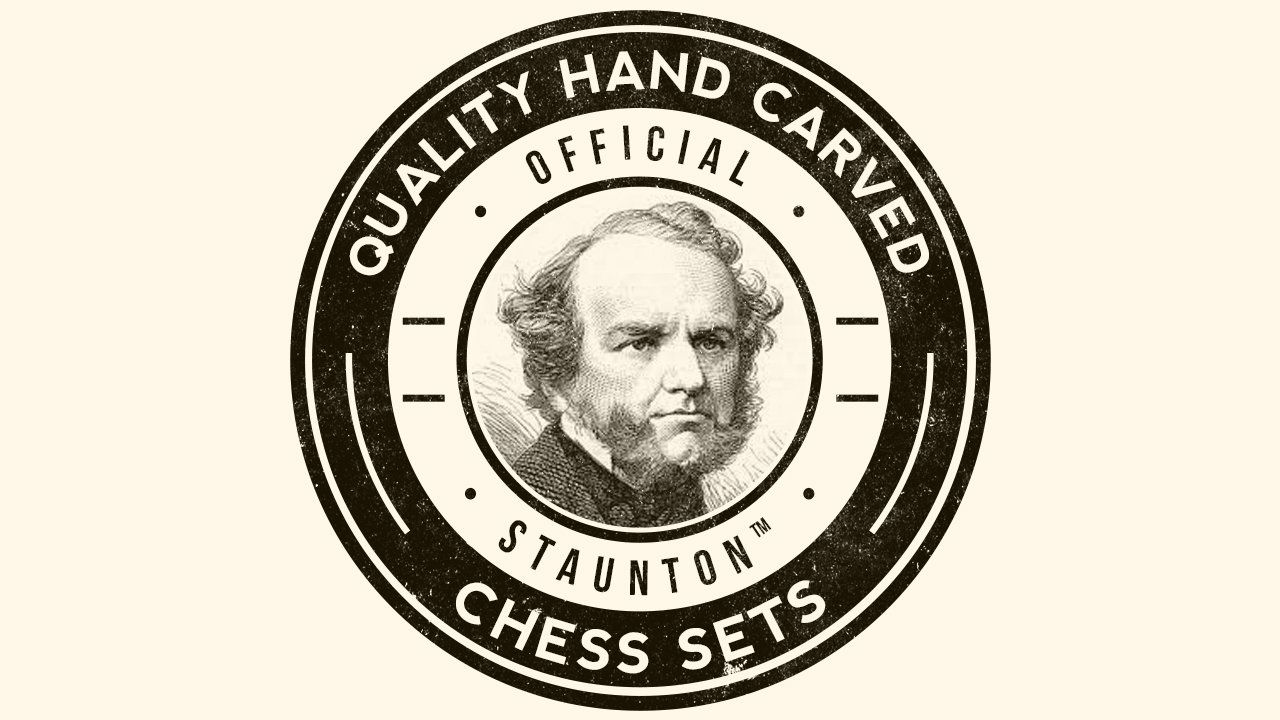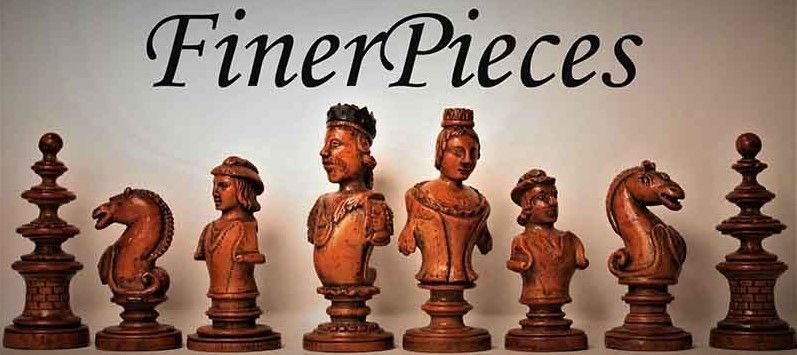Indian Bone Chess Set, "Hindu" Pattern, ca. 1900
A rare Indian chess set from the late 19th or early 20th century made of bone. One side is decorated predominantly in red in the so called circle eye pattern (cf. Holländer, Schachpartie durch Zeiten und Welten, Fig. 143), the opposing side is decorated predominantly in black. Kings and Queens are of identical shape, but different size, with dome shaped tops and turned finials. The Rooks, Knights and Bishops are of abstract form. The Pawns in the so called "pepperpot" shape. King 6 cm high.
The set was sold as an "Islamic" set, but this may not be quite correct in the light of recent research. Whereas former authors have described the shape of the Kings and Queens as resembling a minaret and have therefore associated this design with Islamic pieces (cf. Hammond, The Book of Chessmen, pl VI), latest research by Manfred Eder seems to show that the basic shape of the chessmen goes back to ancient Indian gaming pieces predating the Islamic period (cf. Eder, Alte Indische Schachfiguren, p 36 et seq., cat. no. 26, descr. p. 54; see also Eder, Arabisch-islamische Schachfiguren, p. 5). A similar set exhibited in the State Museum of Archaeology in Hyderabad is labeled as "Hindu", which is the term Ederis suggesting as well. Sometimes sets like this have been also referred to as "Moghul-Indian".
Since the abstract form of the pieces is similar to Islamic sets, which were used for Shatranj, I found it quite appropriate to use the pieces to set up a mansūba, the chess compositions in Arabian chess. The "Mate of Dilaram", one of the most famous mansūba, is shown in the last picture. It was composed by Abu-Bakr as-Suli and was found in an old Stambul manuscript dated before 946. According to the frame story, Dilaram was the favourite wife of a sultan who even used her as a game stake as a passionate chess player. When he was playing with the white pieces and about to lose, she exclaimed, "Sacrifice your Rooks and save your wife!"
PS: The box is special as well, as it is made of porcupine quill!















